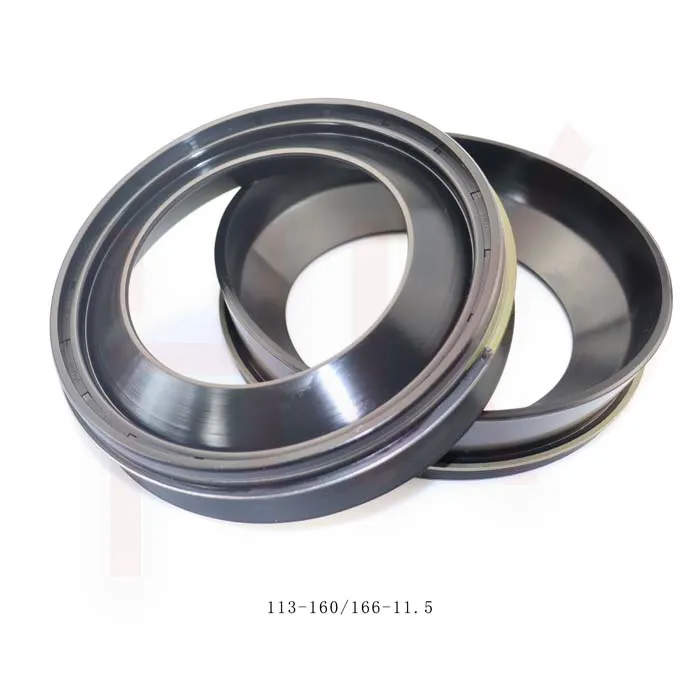10 月 . 10, 2024 20:56 Back to list
wiper seal types
Understanding Wiper Seal Types Essential Components for Fluid Control
Wiper seals are critical components in dynamic sealing applications where they play a vital role in preventing leaks in hydraulic and pneumatic systems. By carefully controlling fluid movement, wiper seals ensure equipment operates efficiently and reliably. Various types of wiper seals are designed to meet specific operational demands, ensuring they effectively keep contaminants out while allowing necessary movement. In this article, we will explore the different wiper seal types, their functions, and applications.
What Are Wiper Seals?
Wiper seals are a type of seal used to wipe the surfaces of rods or pistons in hydraulic and pneumatic cylinders. Their primary purpose is to prevent the ingress of dirt, dust, and other particulate matter into the system while keeping lubricating fluids contained within. Wiper seals are typically installed at the external ends of the cylinder to protect the internal components from external contamination, which can lead to wear or failure.
Types of Wiper Seals
1. Polyurethane Wiper Seals Polyurethane wipers are popular for their excellent abrasion resistance and durability. They are highly resilient and can withstand a broad range of temperatures and pressures. This type is particularly effective in heavy-duty applications such as construction equipment and agricultural machinery, where exposure to harsh environments and contaminants is common.
2. Rubber Wiper Seals These seals are made from materials like nitrile or silicone rubber. Rubber wipers provide good sealing performance in moderate environments and are generally less expensive than their polyurethane counterparts. They are widely used in automotive applications, including hydraulic brake systems and automotive suspensions.
3. PTFE Wiper Seals (Polytetrafluoroethylene) PTFE wipers offer excellent chemical resistance and low friction properties, making them suitable for applications involving aggressive fluids or extreme temperatures. They are often used in industries such as pharmaceuticals, food processing, and chemical manufacturing, where cleanliness and resistance to corrosive substances are paramount.
4. Metal Reinforced Wiper Seals Some wiper seals incorporate metal reinforcements for added strength and rigidity. These seals are beneficial in high-pressure or high-temperature applications, where traditional materials might fail. They are often used in hydraulic systems in manufacturing equipment or aerospace applications, where reliability and performance are critical.
wiper seal types

5. Combination Seals These seals integrate multiple materials and functionalities to enhance performance. For instance, a combination seal might incorporate a wiping element designed to prevent contamination, along with another sealing element that retains lubricants. This type of seal is particularly useful in applications where space is limited, and dual functions are required.
Factors to Consider When Choosing Wiper Seals
When selecting a wiper seal, several factors must be considered to ensure optimal performance.
- Operating Environment Understanding the temperature, pressure, and chemical exposure of the application is crucial. Selecting a material that can withstand these conditions will prolong the seal’s life and maintain reliability.
- Movement Type The type of motion—reciprocating or rotary—will dictate the design of the wiper seal. Ensure the seal is designed specifically for the motion involved in the application.
- Contaminant Type Different seals are designed for various contaminants. For example, if the environment contains fine dust, a seal with superior wiping action will be beneficial.
- Space Constraints In situations where space is limited, compact wiper seals or combination seals might be required to achieve both sealing and wiping functions.
Conclusion
Wiper seals are crucial components in maintaining the performance and longevity of hydraulic and pneumatic systems. With a variety of types available, it's essential to choose the right wiper seal based on the specific application requirements. By understanding the features and benefits of each type, operators can ensure optimal sealing solutions that protect equipment and enhance operational efficiency. Proper selection and maintenance of wiper seals can save time and costs associated with equipment downtime and repairs, promoting a more reliable and efficient system overall.
-
The Power of Advanced Sealing: High-Pressure Solutions for Modern Machinery
NewsOct.29,2024
-
Optimizing Machinery with High-Performance Oil Seals
NewsOct.29,2024
-
Maximizing Machinery Efficiency with Advanced Oil Seals
NewsOct.29,2024
-
Ensuring Equipment Longevity with Quality Oil Seals
NewsOct.29,2024
-
Enhance Equipment Performance with Quality Oil Seals
NewsOct.29,2024
-
Custom Oil Seals for Specialized Machinery Needs
NewsOct.29,2024
-
The Role of Wiper Seals in Dust Sealing and Oil Protection
NewsOct.20,2024
Products categories
















